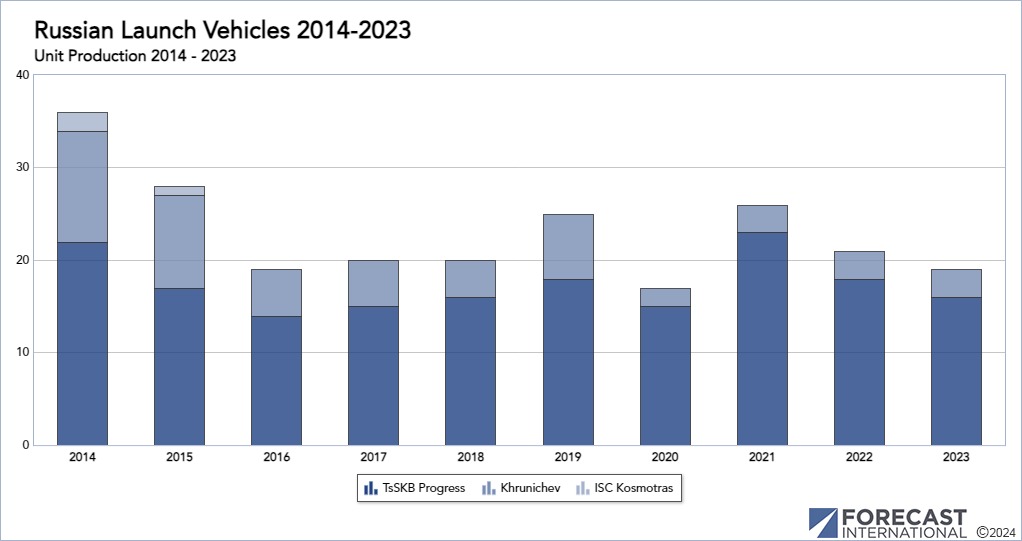
The Soyuz MS-22 rocket launches three Expedition 68 crew members to the International Space Station. NASA/Bill Ingalls
Soyuz: A Spaceflight Workhorse Grounded by Geopolitics
As Russia shifts focus inward, the once-dominant launch vehicle faces an uncertain future.
The Soyuz rocket has become the most prolific rocket in the history of spaceflight. The rocket, derived from the R-7 missile, has been in operation since the 1960s. Launching mainly from Kazakhstan and Russia, Arianespace also utilized the launch vehicle from Kourou, French Guiana. Russia has also employed other rockets in the past such as Proton and Rockot. The war in Ukraine ended the partnership with Kourou but what impact has the war had on the Russian launch market in general?

This chart shows Russian launches from 2014 including the rockets DNEPR (out of production), Rockot (out of production), Proton (likely out of production), Angara and Soyuz. There has been some reduction in launches since 2022 with the last major non-Russian payload being OneWeb satellites launched in February 2022. Analysis of mainly Soyuz launches suggests domestic payloads are driving the launch industry. True, Russia still launches Soyuz Spacecraft and Progress vehicles to the International Space Station; however, outside of that remaining international cooperation, all the payloads launched since early 2022 have been Russian.
The fact that Russian rockets are launching Russian payloads is not an earth-shattering revelation. Japanese rockets tend to launch Japanese payloads, China and India are also much the same. Russia, however, is no stranger to Space and the list of their achievements in the Cosmos is only rivaled by the United States. Russia was once a launcher of payloads from various nations, the French CSO (Composante Spatiale Optique) is an example of this, but current tensions have put Russia firmly in the passenger seat. The international market that once made Russian rockets fly has evaporated.
The domestic market is still a strong market for Angara and Soyuz; however, that is all it will be for the time being. Russia, despite having very reliable launch vehicles, has fallen so out of favor with the West that recovery to pre-invasion levels will take a long time if at all. As this war grinds on, just how many Russian payloads are there to launch? There is no massive Russian LEO constellation, such as Starlink in the United States. Russian launches will likely to continue to have payloads to maintain capability rather than add new capability. Forecast International sees launch rates for Russian rockets as steady but not at the levels pre-2022.

